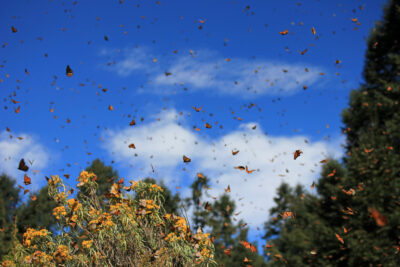Overwintering refers to the survival strategies employed by plants, insects, and animals during the winter season, when temperatures are low and food availability is limited.
For plants, overwintering strategies include the production of hardy leaves or stems that can withstand freezing temperatures, the dropping of leaves to conserve energy, and the formation of buds that remain dormant until the spring. Some plants, such as evergreens, retain their leaves throughout the winter and continue to photosynthesize, albeit at a slower rate, during periods of warm weather.
For insects, overwintering strategies include migration to warmer regions, hibernation, and the production of a hard exoskeleton that provides insulation. For example, the monarch butterfly migrates from North America to Mexico for the winter, while ladybugs and other beetles overwinter in cracks and crevices, becoming dormant until the spring.
For animals, overwintering strategies vary widely depending on the species and their habitats. Some mammals, such as bears, hibernate during the winter, conserving energy and avoiding the need to search for food. Birds, on the other hand, may migrate to warmer regions, or may adapt their behavior and food sources to cope with the winter. For example, some birds, such as chickadees and nuthatches, store food during the fall, while others, such as geese and swans, switch to a diet of aquatic plants and animals during the winter.
Regardless of the species, overwintering is a critical survival strategy, enabling plants, insects, and animals to endure the harsh conditions of winter and emerge stronger in the spring. Effective overwintering strategies often involve a combination of adaptation, energy conservation, and behavioral changes, allowing species to persist in their habitats and maintain the delicate balance of ecosystems.
In addition to benefiting individual species, overwintering is also important for maintaining the health of ecosystems. For example, overwintering insects and pollinators are essential for the reproduction and survival of many plants, while migratory birds play a key role in seed dispersal and nutrient cycling.
Overall, overwintering is a fascinating and complex process that showcases the remarkable resilience and adaptability of the natural world. Understanding the strategies employed by different species can provide valuable insights into the workings of ecosystems and the mechanisms by which species persist in the face of environmental challenges


